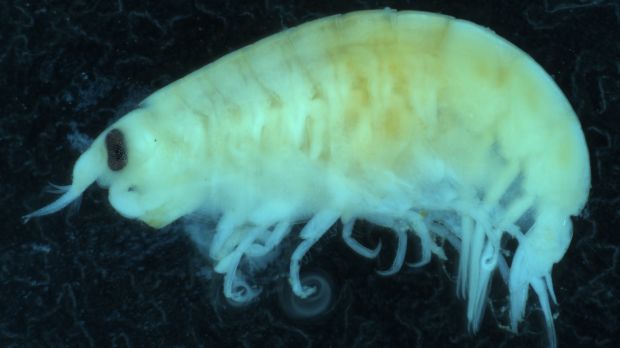These Harmless-Looking Sea Creatures Chewed Up A 16-Year-Old's Legs In Australia
A visit to a beach turned into a bloody affair for 16-year-old Sam Kanizay.
It looked like a scene from the 1970s movie, 'Piranha'.
A teenager from Melbourne suffered bloodied bites on his legs after being attacked by mysterious, flesh-eating sea creatures when he dipped his legs in the water at a beach.
16-year-old Sam Kanizay felt sore after a game of football on last Saturday, 5 August and decided to soak his legs at Dendy Street Beach in Brighton, Melbourne before heading back home.
When he stepped out of the water, he noticed blood on his legs.
"I walked out and saw what I thought was sand covering my calf and shook it off, and by the time I'd walked across the sand about 20 meters to put my thongs on, I looked down and noticed I had blood all over my ankles," he told ABC.
He was taken to the hospital after his father, Jarrod Kanizay, was unable to stop the bleeding
After taking his son to the hospital, the senior Kanizay said that despite the initial treatment, his son continued to be affected by whatever it was that was attacking his legs.
"As soon as we wiped them down, they kept bleeding, there was a massive pool of blood on the floor," Kanizay said.
Searching for answers about his son's mysterious injury, Kanizay returned to the same beach spot where his son was bitten.
He poured some water from the part of the beach where his son was attacked onto some meat in a tank and filmed an experiment
The skin-crawling video shows thousands of unknown pests gnawing away at the steak used to lure it from the water.
A marine scientist has noted that sea fleas were probably behind the attack
Dr Genefor Walker-Smith told The Sydney Morning Herald that after close examination of the specimens collected by Kanizay, she came to the conclusion that the creatures were sea fleas, not sea lice as some might have speculated.
While sea fleas have a tendency to feed on flesh, Walker-Smith said it only happens in rare cases. She added that the number of bites sustained by the teen was due to a huge swarm, that might've been attracted by a cut in his skin.
Here's the scary part - sea fleas are found all over the world in hundred of species
"They're there all the time; you could put a piece of meat in the water, anywhere in the beach, and you could find them," Walker-Smith said.
However, she assured that Sam's case was an isolated one and he was "in the wrong place at the wrong time."
Referring to the excessive bleeding, Walker-Smith suggested that some sea fleas might inject an anticoagulant into their food to prevent blood from clotting
"It is possible that the amphipod has an anticoagulant that it released like leeches do, so it stops the blood from clotting."
The bleeding eventually stopped and Sam is expected to make a full recovery without any permanent scarring
The incident won't deter Sam from returning to the beach.
“I may ice my legs in the pool from now on but I’ll definitely go out swimming there again,” he said. “Plenty of people go for a swim in there, so it’s probably just a one-off thing.”




